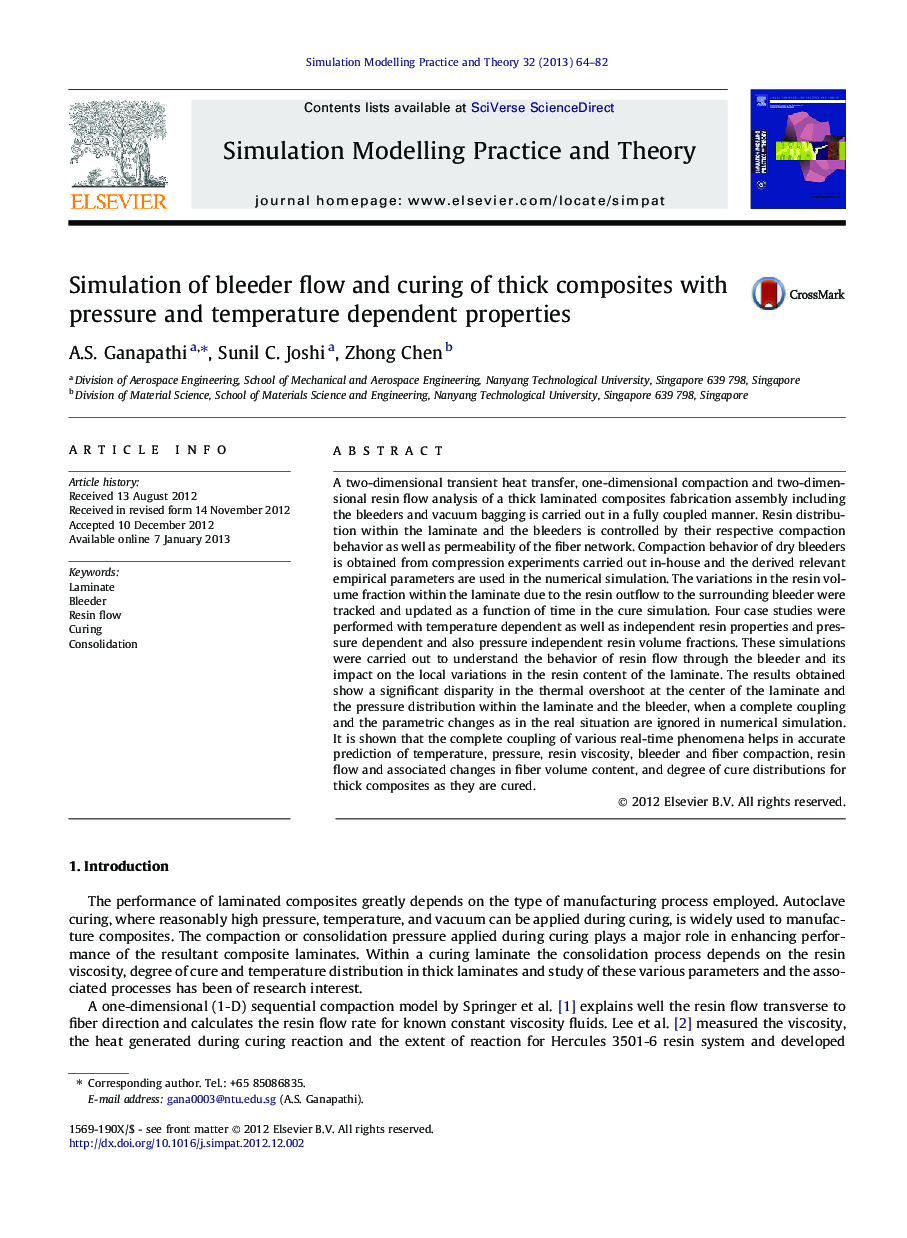| Article ID | Journal | Published Year | Pages | File Type |
|---|---|---|---|---|
| 491786 | Simulation Modelling Practice and Theory | 2013 | 19 Pages |
A two-dimensional transient heat transfer, one-dimensional compaction and two-dimensional resin flow analysis of a thick laminated composites fabrication assembly including the bleeders and vacuum bagging is carried out in a fully coupled manner. Resin distribution within the laminate and the bleeders is controlled by their respective compaction behavior as well as permeability of the fiber network. Compaction behavior of dry bleeders is obtained from compression experiments carried out in-house and the derived relevant empirical parameters are used in the numerical simulation. The variations in the resin volume fraction within the laminate due to the resin outflow to the surrounding bleeder were tracked and updated as a function of time in the cure simulation. Four case studies were performed with temperature dependent as well as independent resin properties and pressure dependent and also pressure independent resin volume fractions. These simulations were carried out to understand the behavior of resin flow through the bleeder and its impact on the local variations in the resin content of the laminate. The results obtained show a significant disparity in the thermal overshoot at the center of the laminate and the pressure distribution within the laminate and the bleeder, when a complete coupling and the parametric changes as in the real situation are ignored in numerical simulation. It is shown that the complete coupling of various real-time phenomena helps in accurate prediction of temperature, pressure, resin viscosity, bleeder and fiber compaction, resin flow and associated changes in fiber volume content, and degree of cure distributions for thick composites as they are cured.
